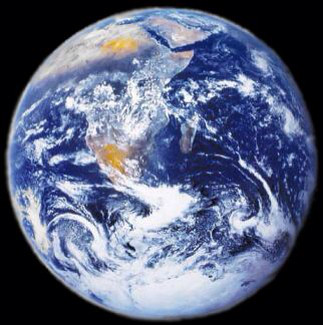If we read the financial pages, economic growth seems to be viewed as the “normal” situation to which economies inevitably return. But is it really?
If we look back over the past 50 years, or even over the past 100 years, economic growth has predominated. Over the longer term, we know that people have become more prosperous, and that world population has grown. The natural assumption is that economic growth will continue in the future as it has in the past.
Let’s think about this a little further. We live on an earth with a fixed surface area. If the population of the earth keeps growing, at some point people would fill up every square foot (or square meter) of land space. Clearly that can’t happen. Also, the resources we pull from the ground aren’t unlimited–at some point the amount we pull from the ground starts to deplete. We know that at some point, perhaps far in the future, economic growth must stop.
The question is really where we are now, relative to the hard limits that we know must exist. Let’s think about the situation.
What is needed to produce goods and services?
If we are going to have an economy, we will need goods and services. What do we need to produce these goods and services? While there are standard breakdowns (for example, land, labor and capital), the following is a different approach to the breakdown:
1. Human ingenuity. Animals don’t provide goods and services; humans do. Human ingenuity is needed to think of ways of combining materials and energy of various forms to provide goods and services.
2. Materials. Goods and services don’t come from thin air. Even if the product in question is a service, materials of various types are likely to be needed–a place for the worker to work, perhaps heated and cooled; a computer for the worker; transportation to and from work; and food for the worker. If food is to be produced, the soil must be of good quality, appropriate minerals must be in the soil, and fresh water must come at appropriate times.
3. Energy sources. ”Work,” typically involving some type of movement or heat, has to be performed to make the service or goods appear. This work is performed by some combination of humans, animals and machines. A human worker needs food as an energy source so he can perform the work of typing on computer keys. Similarly, in parts of the world where draft animals perform work, they need food as their energy sources. Machines operate with various kinds of energy inputs. If electricity is used, it can be generated in many different ways. Other forms of energy include fossil fuels (coal, natural gas, and oil), wood burned as fuel, wind energy, solar energy, nuclear energy, water energy, ethanol and other biofuels, and geothermal energy.
4. A way to pay for goods and services. In the earliest days, people lived in small groups. If one person was able to catch a large animal for food, the animal was shared freely with the group. In this case, there was no need for a system to pay for goods and services.
Once we start moving to larger numbers of people, some type of financial system is needed. If investments in large factories are to be made, a financial system must be available to accumulate past savings, so that they can be used to pay for the factories. Alternatively (or in addition), debt financing must be available, to promise to use the profits to pay for the factory in the future. There must also be a way for individuals to purchase goods and services sold. David Graeber in Debt: The First 5,000 Years talks about the relatively complex systems that were in place many years ago. More
